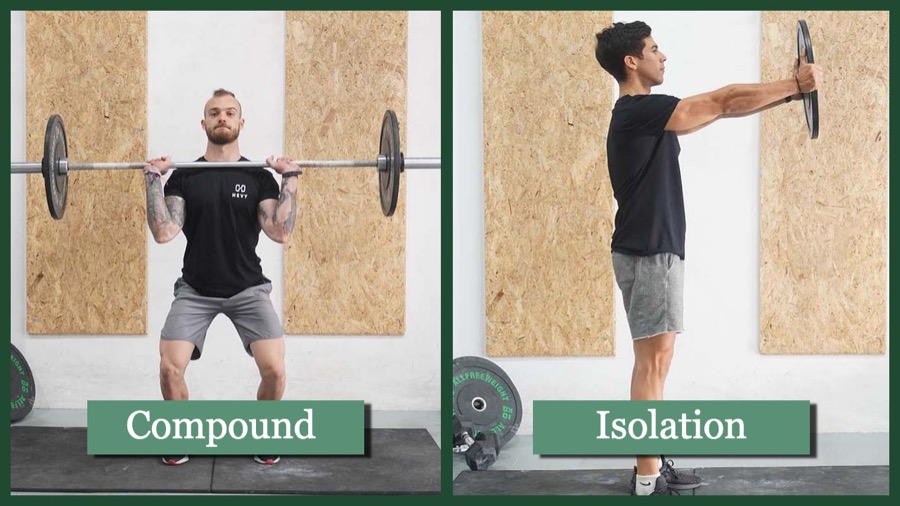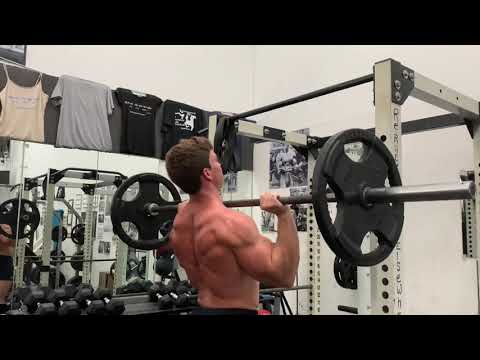The shoulder press—also known as the overhead press—is a foundational movement in strength training. But is shoulder press a compound exercise? Absolutely. The shoulder press engages several major muscle groups and joints, making it a true compound lift that deserves a place in any upper body workout routine.
In this article, we’ll break down the benefits of the shoulder press, how it compares to isolation movements, proper form, and how to safely include it in your training plan. Whether you’re a beginner or an experienced lifter, learning how to maximize the shoulder press will take your upper body strength to the next level.

Credit: www.hevyapp.com
What Makes the Shoulder Press a Compound Exercise?
A compound exercise involves movement at more than one joint and recruits multiple muscle groups. The shoulder press ticks all those boxes. During this lift, your shoulders (deltoids), triceps, trapezius, and upper pectorals are engaged as you push the weight overhead. Meanwhile, your core muscles activate to keep your torso stable—especially when performing a standing shoulder press.
Unlike isolation exercises like lateral raises, the shoulder press does not just focus on a single muscle group. It’s a functional movement that mimics real-life lifting tasks, making it excellent for building full-body coordination and stability.
Muscle Groups Worked in the Shoulder Press
When executed with proper form, the shoulder press activates:
- Anterior, medial, and posterior deltoids
- Triceps brachii
- Upper trapezius
- Serratus anterior
- Core stabilizers (abs and lower back)
This makes it a top compound shoulder exercise for both muscle building and increasing pressing strength.
Benefits of the Shoulder Press for Strength Training
Adding the shoulder press to your routine can unlock a range of benefits:
1. Boosts Upper Body Strength
The shoulder press helps you build stronger and more defined shoulders. It also develops your triceps and upper chest, which translates into improved performance in other pressing exercises.
2. Improves Posture and Stability
Because it activates your core and back muscles, the shoulder press can help correct posture and improve overall body alignment—especially when done standing.
3. Efficient Muscle Engagement
As a compound lift, this movement provides more bang for your buck—engaging multiple muscles at once, which is perfect for people with limited training time.
4. Burns Calories and Enhances Metabolism
Since more muscles are activated during compound lifts, the shoulder press helps increase calorie expenditure, making it great for fat loss and muscle toning.
Shoulder Press vs Isolation Exercises
While isolation movements like front raises or lateral raises target individual shoulder heads, the shoulder press builds overall strength faster and more efficiently.
| Feature | Shoulder Press | Isolation Movements |
|---|---|---|
| Muscle Groups Engaged | 4–5 major groups | 1–2 specific muscles |
| Calorie Burn | Higher | Lower |
| Functional Strength | High | Low |
| Suitable for Beginners | Yes | Intermediate+ |
For balanced shoulder development, a combination of compound and isolation exercises is recommended.
Shoulder Press Variations
To keep your training engaging and challenge your muscles in new ways, try these effective shoulder press alternatives:
- Seated Shoulder Press (barbell or dumbbells): Offers more stability
- Arnold Press: Adds rotational movement to target all three deltoid heads
- Single-Arm Dumbbell Press: Improves unilateral strength and core stability
- Landmine Press: Great for beginners or those with shoulder mobility issues
Proper Form: How to Do a Shoulder Press Safely
Maintaining proper form during the shoulder press is crucial for avoiding injury and maximizing benefits. Follow these tips:
Step-by-Step Instructions:
- Start Position: Stand tall with your feet shoulder-width apart. Hold a dumbbell or barbell at shoulder height, elbows slightly forward.
- Engage Your Core: Brace your abs and glutes to avoid arching your lower back.
- Press Overhead: Push the weight straight up until your arms are fully extended.
- Control the Descent: Slowly lower the weight back to shoulder level.
- Breathing: Inhale before pressing, exhale as you push overhead.
Common Mistakes to Avoid
- Overarching your back
- Using excessive weight too soon
- Letting elbows flare too far out
- Rushing through reps
Who Should Avoid Shoulder Press?
If you have pre-existing shoulder injuries, consult with a physical therapist or certified trainer. Alternatives like the landmine press or neutral-grip dumbbell press may reduce shoulder strain.
Always warm up before lifting and avoid overtraining the shoulders to minimize the risk of impingement or rotator cuff issues.
Sample Workout Routine With Shoulder Press
Here’s how you can incorporate the shoulder press into a well-rounded upper body workout:
Day 1: Push Day (Chest/Shoulders/Triceps)
- Barbell Shoulder Press – 4 sets x 8 reps
- Dumbbell Bench Press – 3 sets x 10 reps
- Lateral Raises – 3 sets x 12 reps
- Tricep Dips – 3 sets x 10–12 reps
- Core work (planks, crunches)
Final Thoughts: Is the Shoulder Press Worth It?
The shoulder press is one of the best compound exercises for building strong, defined shoulders and boosting upper body performance. It engages multiple muscle groups, enhances posture, and burns more calories than isolation lifts.
Whether you’re working out at home or in the gym, adding shoulder press variations to your strength training program can improve your results quickly and efficiently.
So next time you’re planning your routine, don’t skip this powerhouse move—it’s your shortcut to strong, sculpted shoulders.
Frequently Asked Questions
Q: Is the shoulder press a compound or isolation exercise?
A: It’s a compound movement that activates multiple muscle groups.
Q: Can beginners do the shoulder press?
A: Yes! Start with light dumbbells or a resistance band to master the movement.
Q: How often should I train shoulders?
A: 1–2 times per week is sufficient for most people, depending on your overall program.

